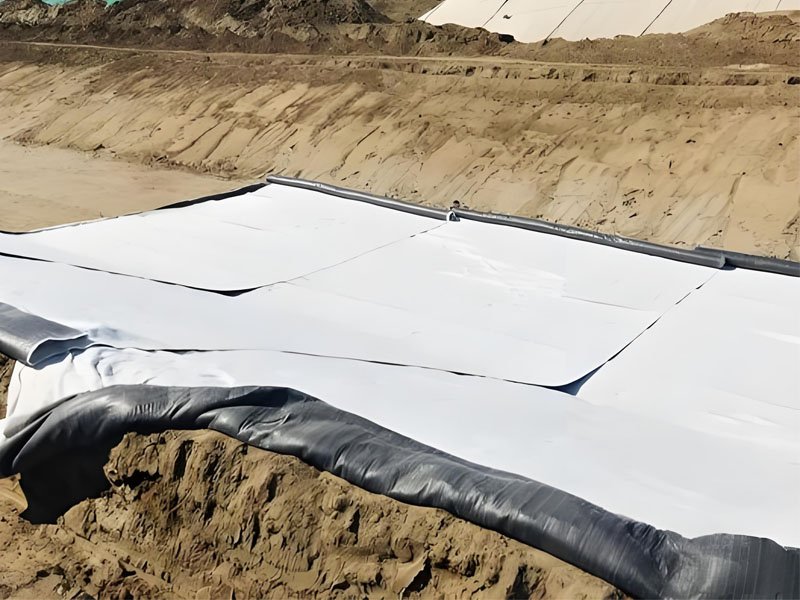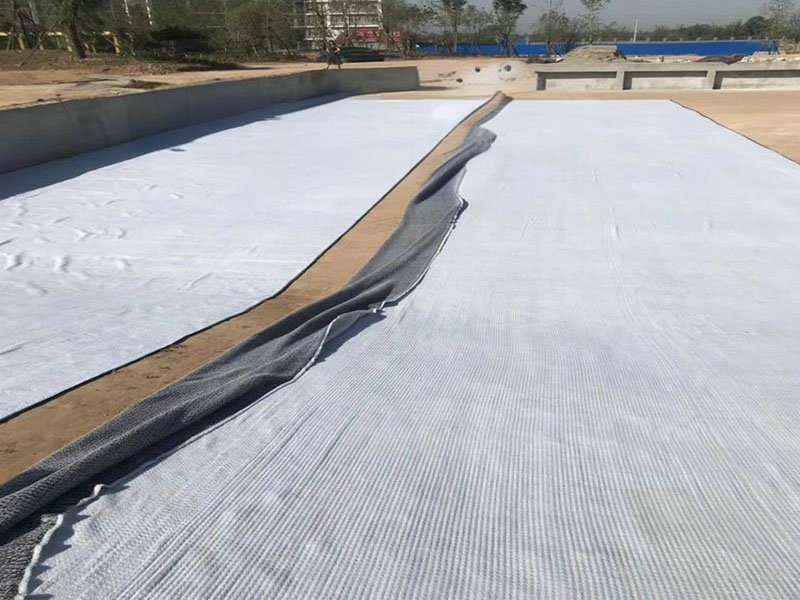Since the late 1980s, GCL Liner has been specified and used by design engineers, contractors, agencies and owners as an alternative to soil barriers in a variety of applications. The growing interest in these products stems from the unique properties and advantages they offer. They act as very effective hydraulic barriers even in high gradient conditions; they are easy to install; they are more resistant to installation stresses and can withstand elongation and settlement stresses without significant impact on hydraulic performance. Geosynthetic clay liner has a wide range of uses, including landfill cover and base liner applications, dams, canals, ponds, rivers and lakes, and even waterproofing of buildings and similar structures. Many laboratory studies have shown that natural sodium bentonite BPM Geosynthetics GCL Liner has excellent performance.
1. What Is GCL Liner?
BPM Geosynthetics Geosynthetic Clay Liners (GCLs) are needle-punched reinforced composites. They combine two durable geotextile outer layers with a uniform core of natural sodium bentonite clay to create a hydraulic barrier. The sodium bentonite clay used in the BPM Geosynthetics GCL liner is a naturally occurring clay mineral that swells when water enters between its clay flakes. When hydrated under confined conditions, the bentonite swells to form a low-permeability clay layer with hydraulic protection equivalent to several feet of compacted clay.
The BPM Geosynthetics GCL liner is made by distributing a uniform layer of sodium bentonite between two layers of geotextile. Fibers from the nonwoven geotextile are then needle-punched through the bentonite layer and incorporated into another layer of geotextile (woven or nonwoven). This process creates a strong mechanical bond between the fabrics. Using a proprietary heat treatment process – the Heat Lock process – the needle-punched fibers are then modified to hold them in place more durably. Properties include enhanced internal shear resistance and long-term creep resistance.


2. What Are Advantages Of GCL Liner?
The GCL liner, or Geosynthetic Clay Liner, offers several advantages that make it a popular choice for various applications, particularly in environmental engineering and construction. Here are the key advantages:
2.1 Low Permeability
GCL liners have a very low permeability rate. This makes them highly effective. They prevent the migration of contaminants and liquids. These substances are kept from moving through the soil. This is crucial for environmental protection. It is also essential for safety.
2.2 Flexibility
Unlike traditional compacted clay liners, GCLs are flexible. They can easily conform to irregular surfaces. This flexibility is a key advantage. It enhances their ability to cover large areas. They can do this without tearing or breaking.
2.3 Lightweight
GCL liners are significantly lighter than other types of barrier systems, such as compacted clay liners. This makes them easier to handle, transport, and install, reducing labor costs and installation time.
2.4 Durability
The use of natural sodium bentonite clay in GCLs provides excellent durability. When hydrated, bentonite swells and creates a dense, impermeable layer that maintains its integrity over a long period.
2.5 High Mechanical Stability
Modern GCL liners undergo processes like needle-punching. They also undergo heat treatment (e.g., Heat Lock process). These processes ensure strong mechanical bonds between layers. This results in enhanced internal shear resistance. It also provides long-term creep resistance.
2.6 Ease of Installation
GCLs can be installed quickly and efficiently, often requiring less preparation compared to other barrier systems. Their ease of installation minimizes disruption to site operations and reduces overall project timelines.
2.7 Versatility
GCL liners are suitable for a wide range of applications. They can be used in landfills. They are also useful in waste containment facilities. Additionally, they work well as mine seals. They are also effective in pond liners. Their versatility is a key benefit. This makes them valuable across various industries.
3. What Are Disadvantages Of GCL Liner?
GCL liners, or Geosynthetic Clay Liners, have several advantages, but they also come with some disadvantages. Here are the key drawbacks of using GCL liners:
- Sensitivity to Hydration: GCLs require proper hydration to achieve their full effectiveness. If not adequately hydrated, the bentonite clay may not fully swell, compromising its low-permeability properties.
- Potential for Punctures and Tears: Despite their flexibility, GCLs can still be susceptible to punctures. They are also prone to tears during handling. This is particularly concerning in construction environments. Sharp objects are common there. Heavy machinery is also frequently present.
- Dependence on Water Chemistry: The performance of GCLs can be affected by the chemistry of leachate. Certain chemicals can react negatively with sodium bentonite. This reduces its swelling capacity. It also decreases effectiveness as a barrier.
- Temperature Sensitivity: Extreme temperatures can impact the performance of GCLs. High temperatures can cause desiccation. This means drying out of the bentonite clay. Very low temperatures can affect flexibility. They can also make the material more brittle.


4. How To Install GCL Liner?
To install a GCL liner, start by clearing and leveling the ground. Remove all debris and sharp objects. Unroll the GCL carefully onto the prepared surface. Ensure proper alignment according to project specifications. Hydrate the GCL evenly using a garden hose or sprinkler system. Activate the bentonite clay for swelling and effectiveness. Overlap sections by at least 10-15 centimeters. Use tape or adhesive to seal seams. Prevent gaps where liquid could pass through. Cover the hydrated GCL with a geotextile layer. Protect it from physical damage during backfilling. Avoid direct soil compaction on top of the GCL. Use a protective layer of granular material if necessary. Conduct a final inspection to check for tears or punctures. Repair any detected damages immediately. Use patch kits or additional bentonite clay. Keep detailed records of the installation process. Include any issues encountered and repairs made.
5. Summary
While GCL liners offer numerous advantages for environmental protection and contamination prevention, they are not without their drawbacks. One significant disadvantage is their susceptibility to damage during installation and handling, as they can be easily punctured or torn by sharp objects. Additionally, improper hydration can lead to inadequate performance, making it crucial to follow precise installation procedures. Furthermore, GCLs require careful quality control and inspection to ensure there are no defects or leaks, adding to the overall complexity of the project. Despite these challenges, when installed correctly and maintained properly, GCL liners remain a highly effective solution for various containment and barrier applications.





